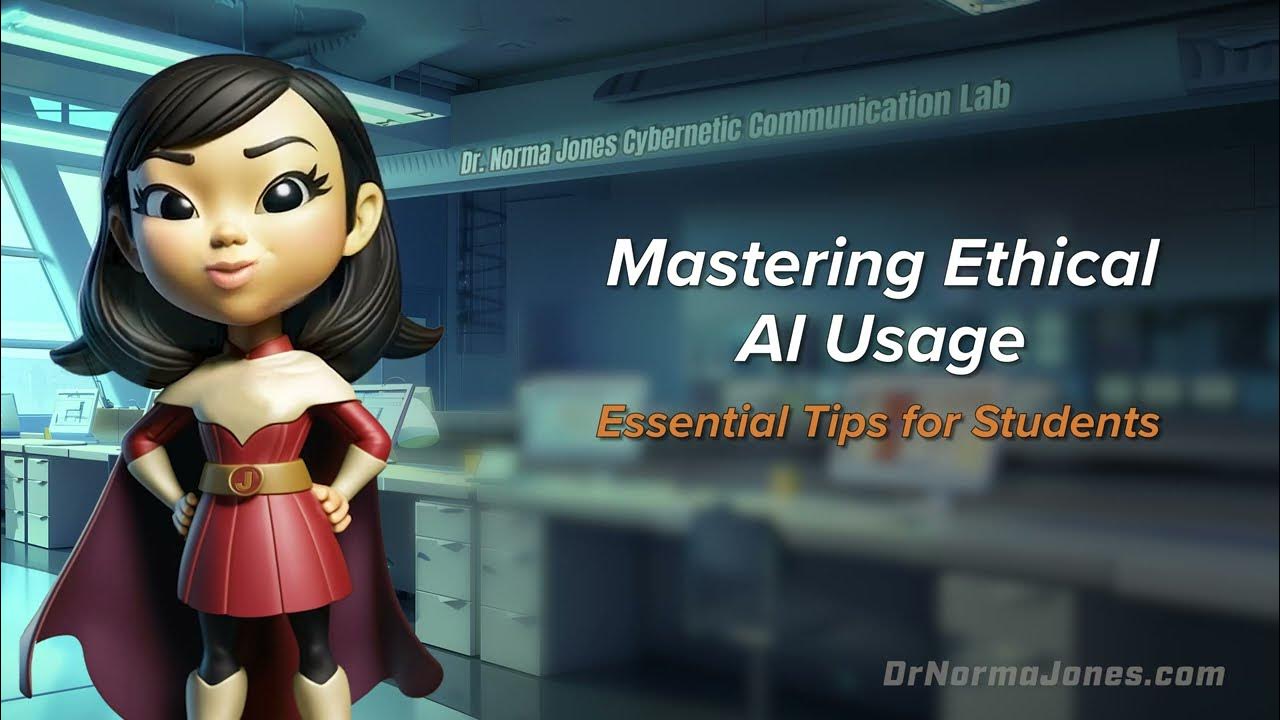Don't use AI for research until you've watched this...NEW Rules
Summary
TLDRThis video highlights essential guidelines for using AI tools in research. Viewers are urged to disclose AI usage in their manuscripts and avoid using AI for original research, fabrication of results, or altering images. While AI can enhance language clarity, it must not compromise the integrity of the research. The script emphasizes that AI cannot be credited as an author and warns against its use in the peer review process to maintain confidentiality and ensure human expertise. Overall, the video promotes responsible and ethical AI integration in academic work.
Takeaways
- 📜 Researchers must disclose their use of AI tools in their work to maintain transparency.
- 📝 Different journals have specific requirements for how to disclose AI usage.
- ❌ AI should not be used for original research or to fabricate results.
- 🔍 AI cannot alter images in submitted manuscripts as it raises ethical concerns.
- ✍️ AI tools can be utilized to improve language, grammar, and overall readability of research papers.
- 🔗 Authors are responsible for the accuracy of any AI-generated content and must cite sources appropriately.
- 🚫 AI does not qualify as an author or co-author on research papers.
- 🔒 AI should not be used in the peer review process to ensure confidentiality and integrity.
- 🖊️ If AI is used in peer review, it must be disclosed and can only help clarify written feedback.
- 🎓 Following these guidelines is essential for maintaining credibility in research while benefiting from AI tools.
Q & A
What is the primary focus of the video regarding the use of AI in research?
-The video emphasizes the rules and guidelines for using generative AI tools in academic research, stressing the importance of disclosure and ethical use.
What is the first rule mentioned for using AI in research?
-The first rule is that researchers must disclose their use of AI in their manuscripts, typically in an acknowledgment or a disclosure statement.
How should AI be disclosed in academic publications?
-Authors should provide details on the type of AI tool used, how it was used, and any specific models employed, such as GPT-4 or Claude, either in the methods section or acknowledgment section.
What are the restrictions on using AI for original research?
-AI tools should not be used to create original research or alter results; they are only permissible for language-related improvements, such as grammar and readability.
Can AI tools be used to modify images in research submissions?
-No, it is explicitly stated that generative AI or AI-assisted tools should not be used to create or alter images in submitted manuscripts.
What does the video say about the role of AI in authoring research?
-The video clarifies that AI does not constitute authorship and should not be credited as an author in any capacity; only human authors can be held accountable for the content.
What is the responsibility of authors when using AI tools?
-Authors are fully responsible for the accuracy of any information provided by AI tools and must correctly reference any supporting work related to that information.
Are tools like Grammarly considered AI tools that need to be disclosed?
-No, tools like Grammarly or basic spell checkers are not included in the guidelines for disclosure, as they are meant for general language improvement rather than substantial content creation.
How should AI tools be utilized in the peer review process?
-AI should not be used to generate or write peer review comments, as this could breach confidentiality; it may only be used to improve the clarity of feedback if done transparently.
What are the implications of using AI in peer review according to the video?
-The video suggests that using AI in peer review undermines the integrity of the process, as it replaces the essential expertise and accountability that human reviewers provide.
Outlines

This section is available to paid users only. Please upgrade to access this part.
Upgrade NowMindmap

This section is available to paid users only. Please upgrade to access this part.
Upgrade NowKeywords

This section is available to paid users only. Please upgrade to access this part.
Upgrade NowHighlights

This section is available to paid users only. Please upgrade to access this part.
Upgrade NowTranscripts

This section is available to paid users only. Please upgrade to access this part.
Upgrade NowBrowse More Related Video

Strategi Penyusunan Instrumen Riset menggunakan AI

Quick tips for Students to get started using AI and Mastering Ethical AI Usage

The Best AI Tools for Academia in 2025 - Stop Searching, Start Using!

I Tested 100+ AI Tools, These 9 Will Blow Up Your Content

7 tools AI ini bisa bikin kamu kaya!

Cara Membuat Karya Ilmiah (KARIL) UT Supaya Lolos Plagiasi
5.0 / 5 (0 votes)